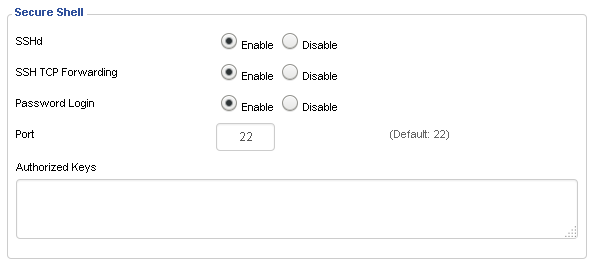
- #Tunel manager ssh install#
- #Tunel manager ssh full#
- #Tunel manager ssh pro#
- #Tunel manager ssh password#
Tunnel groups are just names which holds a list of tunnels. Note that the server needs to support this! Removing connection profiles $ ssh-tunnel-manager profile remove Tunnel groups and tunnels
#Tunel manager ssh password#
If you want to enter your password but not store it use the -password-interactive instead of -p. PASSWORD if you want to connect to this host using a password ( NOT RECOMMENDED). ~/.ssh/id dsa ( NOTE: its _not the public key!) You can create as many as you want, but use only one at a specifies the username you want to use to connect to the host to tunnel thru.įILE TO PRIVATE KEY is a SSH identity file you want to use. NAME is the name you use on command line to specify the connection profile you want to use. To get help adding a connection profile use $ ssh-tunnel-manager profile add -helpīasically the following syntax $ ssh-tunnel-manager profile add Showing the configured connection profiles $ ssh-tunnel- manager profile list You can specify a profile as default so you don't have to specify a profile when you want to start tunnels. This may be handy if you have multiple VPNs but still have the same remote services you want to tunnel to. Connection profilesĬonnection profiles are used to switch between hosts you tunnel thru. You can configure everything with the CLI interface. You don't have do edit the configuration manually. The use would then be $ ssh-tunnel-manager -v VAR:VALUE -v VAR2:VALUE2Ĭonfiguration files are stored in the OS config directory tunnel-manager/tunnel-manager.yml. If the tunnels to run requires variables to be set you'll be prompted so. Or $ ssh-tunnel-manager -p -t Using variables You can use the -t or -tunnel option multiple times or use a comma separated string to run more tunnel groups $ ssh-tunnel-manager -p -t -t

If you want a specific connection profile or don't have one set as default use $ ssh-tunnel-manager - p If you have a file call ssh-tunnels.yml where tunnels are setup it's even easier $ ssh-tunnel- manager If you want to run a configured tunnel and setup a profile as default you simply run $ ssh-tunnel-manager -t

You might better go first reading the configuration section. If you haven't done any configuration you would be prompted on first startup. The configuration section will cover the most, generally you can always use $ ssh-tunnel-manager - help The CLI interface uses commands and sub commands to configure the tunnels.
#Tunel manager ssh install#
Installation $ npm install -g ssh-tunnel-manager
#Tunel manager ssh full#
#Tunel manager ssh pro#
Detached tunnel and connection configuration (it's up to you to consider this pro or con).Easy to use on command line and still powerful in configuration.NodeJS based and runs on the common OS systems like linux,mac or windows without having more installed than node.

Contributors then only need to start the tunnel manager in this directory or specify this file on startup.įirst of all when you are reading this you might came here for a reason. This is helpful for application maintainers who have the best knowledge about services used in this application. In addition to the configuration file there is also support to specify (or use a default) tunnel configuration file. As for integration system you often need to specify dynamic hostnames - SSH tunnel manager also supports this via variables. You can specify multiple connection profiles such for integration and production systems. Tunnels are managed within groups, if you only need one tunnel then the ssh command is probably better suited. NodeJS based applicaton for easy managing SSH tunnels.


 0 kommentar(er)
0 kommentar(er)
